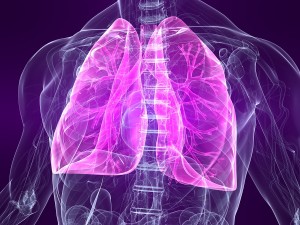 A new device hopes to tell us whether or not our exercise and dieting is paying off–without the need for a scale. In a compact pocket-size, the device measures the amount of fat burned by analyzing the acetone content in a person’s breath. While acetone is mainly produced in the blood when fat is broken down, it’s expelled through tiny sacs in the lungs during exhalation as well. When the device is blown into, acetone concentration levels are calculated and can be sent to a smartphone in as little as 10 seconds. The device has a pressure sensor, which detects the exhaled breath, and two types of semiconductor-based gas sensors to detect acetone.
A new device hopes to tell us whether or not our exercise and dieting is paying off–without the need for a scale. In a compact pocket-size, the device measures the amount of fat burned by analyzing the acetone content in a person’s breath. While acetone is mainly produced in the blood when fat is broken down, it’s expelled through tiny sacs in the lungs during exhalation as well. When the device is blown into, acetone concentration levels are calculated and can be sent to a smartphone in as little as 10 seconds. The device has a pressure sensor, which detects the exhaled breath, and two types of semiconductor-based gas sensors to detect acetone.
During a trial, researchers tested the device on 17 overweight, but otherwise healthy, adults. They divided the participants into 3 groups; the first group did not have any daily calorie-restriction and were not required to exercise. The second group was required to exercise 30-60 minutes a day but eat how they like, and the third group was required to take part in the same exercise routine and also had a daily calorie limit. For 2 weeks, the participants measured their body weight, body fat percentage and breath acetone concentrations using the device and a standard instrument for comparison.
The researchers found that the participants in the first 2 groups did not shed significant amounts of fat and their breath acetone concentrations remained constant. However, the participants in the third group—those who exercised and had daily calorie limits—lost significant amounts of fat and their breath acetone concentrations were increased significantly. The lead author of the study said that since “the effect of dieting could be estimated from changes in breath acetone concentrations, we’ve shown that our prototype is a practical and alternative checker that can be used in individual dieting programs.”
We asked bariatric surgeon, Dr. Gregory Walton of the WeightWise Bariatric Program, to comment on the findings. He said, “A simple device providing immediate feedback regarding behaviors would be highly beneficial for some patients wanting to lose weight. At this point, ‘the scale’ is our only readily available feedback device, the reading for which can be falsely elevated or depressed according to hydration status or other factors which do not get to the heart of the matter – whether we are burning fat or storing fat. Of course studies on larger groups would be more informative regarding effectiveness.”
Related Reading: Toggle Switch Found–May Encourage Fat Burning






Industry & Innovation